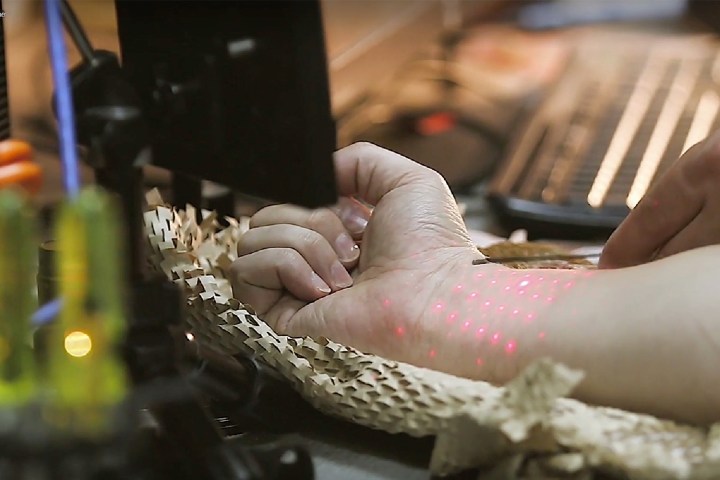
Whether it’s heart rate, breathing rate or muscle activity, there are wearable devices that are capable of measuring just about biometric data point you can think of. But what about no-contact methods of measuring that don’t involve physically touching you at all? That is something researchers from Israeli startup ContinUse Biometrics have been working on. Their resulting device — capable of monitoring these vital signs from meters away — is set to hit shelves as soon as the end of 2018. And it all works thanks to the wonder of lasers.
“The technology has been investigated for eight years in my lab, in collaboration with the lab of Professor Javier Garcia from Valencia, Spain,” Zeev Zalevsky, professor of electrical engineering and nanophotonics at Israel’s Bar-Ilan University, told Digital Trends. “Two years ago, it was commercialized to ContinUse Biometrics, which is going to release its advanced prototypes toward the end of 2018. During the eight years of research, various sensing capabilities were investigated involving vital signs: Blood pressure, hematology, hemodynamics, and more. ContinUse’s first product is focusing on vital signs and blood pressure, [in addition to heartbeat and respiration.]”
The SmartHealth Mod technology can measure these biometrics from a distance, even through a person’s clothes. It works by using a laser to illuminate a person’s chest, and a special camera fitted with optics which allow it to analyze backscattered light. When a person’s heart beats or they breathe, this causes unique “nano-vibrations” in the body which are observable by the device. These tiny vibrations can be associated with different biomedical parameters.
Using higher quality lasers and cameras, the device could reportedly be used to monitor people from as far as 0.25 miles away. Adding an extra magnetic field also allows it to estimate glucose levels in a person’s blood.
In terms of possible applications, Zalevsky said that two examples might include smart homes or smart cars. “In a smart home, the sensor [could] be part of a telemedicine system connecting subscribed patients and health providers,” he said. “In smart cars, the sensor [may be used to] monitor the condition of the driver or the people sitting in the car.” In the event that a person is determined to be unwell, authorities could be alerted as soon as possible or, in the illustration of an in-car technology, the car safely brought to a stop.


